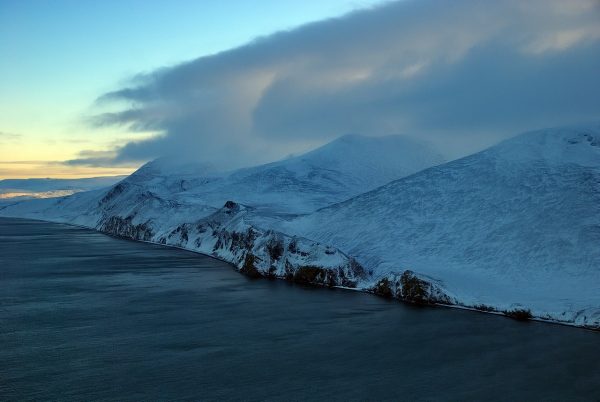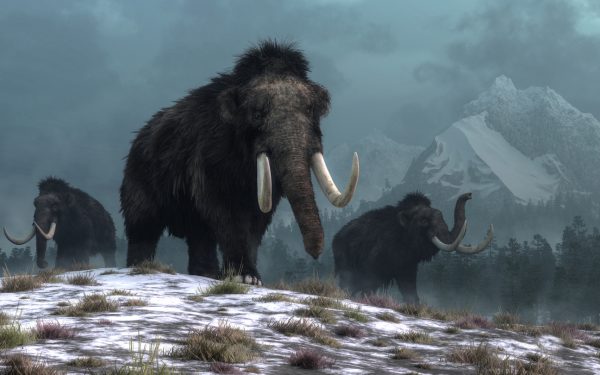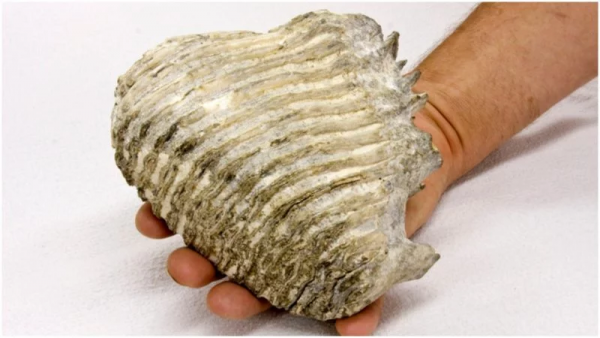The Mammoth Made Its Last Stand on a Desolate Arctic Island

The wooly mammoth roamed for thousands of years in the northern parts of the planet. It’s well known that areas like Siberia had extensive populations of the giant pachyderms. Eventually, though, the magnificent animals began to die out from a combination of being hunted by early peoples and changes in the climate and their habitats, beginning a little less than 12,000 years ago at the end of the last ice age.
The mammoth didn’t fade into history all at once. The populations declined in some areas faster than others, disappearing from North America and Eurasia about 10,000 years ago. Scientists discovered that the mammoth population on St. Paul Island, near Alaska, continued for a few more millennia, not dying out until about 5,700 years ago.
The longest-surviving mammoth population existed on Wrangel Island in the Arctic Sea, and only disappeared about 4,000 years ago, long after other populations met their demise, according to research that was published in 1995.
The researchers involved in that work conducted isotope analysis on the teeth and bones of mammoths from all over the world to learn about the impact changes on their environment had on them. Certain stable isotopes in the soil can be drawn up into plants, which, in turn, are eaten by animals and people.
The isotopes replace some of the calcium in the teeth and bones, which can then be examined to learn things about how old they are, where they came from, and other things about their environment.

A team led by Laura Arppe, of the Finnish Natural History museum, looked at the isotopes of Sulphur, carbon, nitrogen, and strontium to learn about changes in the changes in the animals’ natural environment which could have impacted their habitat and diet.
The team learned the results for the mammoths in the Ukraine and Russia were consistent with extinction; the isotopes found in their bones suggested that there had been major changes in their environments and diets.
Oddly, the mammoths from Wrangel Island weren’t showing the same radical isotopic changes from 10,000 years back which were showing up in specimens from other parts of the world. The Wranglian mammoths bones showed a small increase in strontium and Sulphur, which would suggest weathering of the island’s bedrock, but those changes were much less significant than the changes seen in bones which had come from animals who lived elsewhere.
The mammoths on Wrangel Island were found to have somewhat different carbon isotopes, as well, which caused a mutation in how they metabolized fats.

Arppe remarked that in Siberia and other areas where he winters were extremely harsh, mammoths would have to rely on fat reserves to survive. That wasn’t the case for the population on relatively warmer Wrangel.
That made the researchers wonder about what killed the mammoths of Wrangel if they weren’t under the same environmental pressures as other mammoth populations. The theory they came up with was that a series of harsh, but short-term weather events was probably responsible. If, for example, it rained during the winter, ice would cover the ground, making it difficult or impossible for the animals to have access to their food supply.
In 2017 a DNA study of the Wranglian mammoths showed that the island’s population was starting to decline due to an increasing number of detrimental gene mutations. There was also evidence that suggested a possible decline in the quality of their drinking water.
Living on an island would have left the population isolated and limited the gene pool. Over the course of millennia it’s not a surprise that the group would begin suffering from an increasing number of unfavorable genetic mutations which weakened the group.

That, combined with a decline in the quality of their drinking water would leave them particularly vulnerable to problems such as the weather events just discussed, creating a perfect storm of malnutrition and starvation which would push the mammoths of Wrangel Island past the point of being able to survive.
Researchers couldn’t rule out the idea of humans also contributing to the situation, although most of the evidence seems to suggest that humans didn’t come to the island until after the mammoths were extinct.
Another Article From Us: Apparently Spiders Are Becoming Violent Because of Climate Change
If nothing else, the story of what happened to the mammoths of Wrangel Island demonstrates the fragility of isolated and endangered species and the importance of genetic diversity in survival, lessons which can hopefully be applied to vanishing species in the present time.
